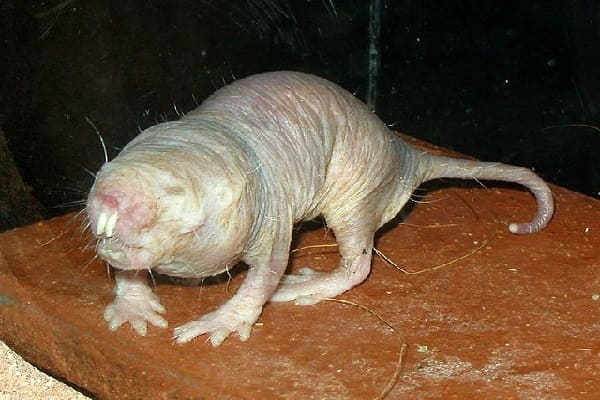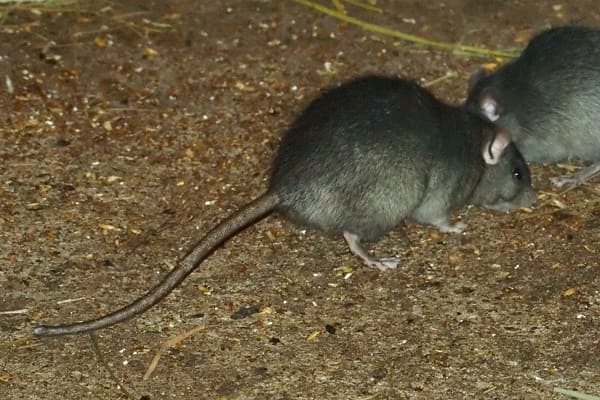
Rodent habitat refers to the natural or man-made environments where rodents like roof rats and Norway rats live and thrive. These species of rats are two of the most common types of rats found in urban and suburban areas, often living in close proximity to human dwellings.
Roof rats, also known as black rats, are agile climbers and tend to live in high places such as in the attic, on roofs, in trees, in holes, in the snow, in the water, in the grass, in the house, in the garage, in the shed, in the barn, in the field, in the woods, in the forest, in the city, in the suburbs, in the country, and on the farm. They are common in warm climates and can cause damage to buildings by gnawing on wires and insulation.
The Norway rat, on the other hand, is a burrower and prefers to live on the ground, in sewers, basements, and abandoned buildings. They are more commonly found in cooler climates and can pose a health hazard by spreading diseases. This article helps in understanding where do rodents live and can help in developing effective control measures to keep them away from human habitation.
Types of Rodents
Rodents have diverse family groups of mammals that are found all over the world, except for Antarctica. They are characterized by their robust bodies, and continuously growing and sharp incisors, which they use to gnaw on food, wood, and other materials. There are several types of rodents with different physical characteristics and habitats.

Kangaroo rats are a group of rodents found in North America that are known for their powerful hind legs and jumping abilities. They live in dry desert habitats and have adapted to survive with very little water. They store food in underground burrows and are active at night to avoid the heat of the day.

Mole rats are a group of rodents found in sub-Saharan Africa and parts of Asia. They are known for their large, spade-like front teeth and underground burrowing behavior. They live in colonies and are highly social, with a complex social hierarchy. They feed on roots and tubers, and their burrowing behavior can have a significant impact on soil composition.
World rats, also known as Old World rats, are a group of rodents that are found in most parts of the world. They include the common Norway and roof rats, as well as other species like black rats and brown rats. These rats are typically nocturnal and can live in a variety of habitats, including urban areas, sewers, and natural habitats like forests and grasslands. They are opportunistic feeders and can survive on a wide range of foods, including human food waste.
Prairie dogs are a type of ground squirrel that are found in the grasslands of North America. They are known for their social behavior and their elaborate burrow systems, which can extend for hundreds of feet underground. Pocket gophers are another type of burrowing rodent, found throughout much of North America. They have large cheek pouches that they use to store food as they dig tunnels in search of roots and tubers.
In South America, there are many unique species of rodents that are found nowhere else in the world. One of the most unusual is the capybara, which is the largest rodent in the world. Capybaras are semi-aquatic and spend much of their time in or near water. Other South American rodents include the chinchilla, which is prized for its soft fur, and the agouti, which is an important food source for many indigenous communities.

Urban and Rural habitats
The habitats of rodents can vary depending on whether they are in an urban or rural environment. Urban areas provide a wide range of food sources and shelter for rodents, making them a prime location for infestations. Roof rats are particularly common in urban areas, as they are skilled climbers, and crawl spaces and can access attics, roofs, and on tiny holes to build nests. Brown rats, on the other hand, tend to burrow in the ground and can be found in sewers, basements, and other areas with moisture.
In rural areas, rodents like mice and rats can cause damage to crops and buildings. They may be attracted to stored food and grain, and can also burrow in fields and gardens. Some species of rodents, like field mice, are adapted to live in open fields and meadows, while others, like wood rats, prefer wooded areas.
The prevention and control of rodent infestations in both urban and rural areas is important for human health and safety, as well as for the preservation of property and crops. Effective control methods include removing potential food sources, sealing entry points, and using traps and bait. It is also important to be aware of the signs of a rodent infestation, such as droppings, gnaw marks, and unusual noises, and to take action promptly to prevent the problem from getting worse.

From Burrows to Attics
Rodents are known for their ability to adapt to a wide range of environments, from underground burrows to attics and other high places. This adaptability can make them a challenging pest to control, as they can find shelter and food sources in unexpected places. Rat infestations in attics and roof spaces are particularly common, as roof rats are agile climbers and can access high places easily.
House mice are another common pest that can be found in a variety of environments, from fields and gardens to homes and buildings. They are small and agile, able to fit through tiny gaps and cracks in walls and floors. They are also prolific breeders, with a single female capable of producing up to 35 offspring per year.
Jumping mice are a type of rodent that are found in North America and are known for their long, powerful hind legs that allow them to leap up to three feet in a single jump. They live in wooded areas and are nocturnal, feeding on insects, seeds, and other small animals. Like other rodents, they can cause damage to crops and gardens if left unchecked.
Effective control methods for rodent infestations depend on the type of rodent and their habitat. For example, sealing entry points and removing potential food sources can help prevent house mouse infestations, while using traps and baits can be effective for controlling roof rat infestations. It is important to work with a professional pest control company to develop an effective control plan that is tailored to the specific rodent species and environment.
Need Help With Rodent Infestation On Your Property?
If you are struggling with a rodent infestation on your property, AAAC Wildlife Removal Services can help. We specialize in humane and effective removal of a wide range of rodent species, including mice, rats, spiny rats, cane rats, birch mice, and other larger rodents and common pests. Our team of experts is trained to identify the signs of rodent infestations, locate entry points, and develop customized control plans that are tailored to the specific needs of your property.
We understand that every rodent infestation is unique, and we use a variety of methods to control and remove these pests. For most species, we use live trapping and relocation to ensure that the rodents are safely removed from your property without harm. Our team also has experience in using baits and other methods to control rodent populations and prevent future infestations.
We take pride in providing exceptional customer service and strive to ensure that every client is satisfied with our work. We are available to answer your questions and provide guidance on how to prevent future rodent infestations. Whether you are dealing with a small mouse problem or a large rat infestation, our team is here to help. Contact AAAC Wildlife Removal Services today to schedule a consultation and take the first step in protecting your property from unwanted rodents.
Final Thoughts
In summary, most rodents are common pests that can cause damage to property and pose a risk to human health. They are adaptable creatures that can live in a wide range of environments, from burrows and fields to attics and wall voids. Different species of rodents have different habitat preferences, ranging from kangaroo rats, and new world porcupines in desert areas to brown rat, black rat, and guinea pigs, in urban environments.
Preventing and controlling rodent infestations requires a combination of strategies, including removing potential food sources, sealing entry points, and using traps and baits. It is important to work with a professional pest control company to develop an effective control plan that is tailored to the specific type of rodent and their habitat.
Remember that early detection is key when it comes to controlling rodent infestations. If you notice signs of a rodent problem, such as droppings or gnaw marks, it is important to take action promptly to prevent the problem from getting worse. With the right approach and the help of a professional pest control company, it is possible to successfully manage rodent populations and protect your property from these unwanted pests.







